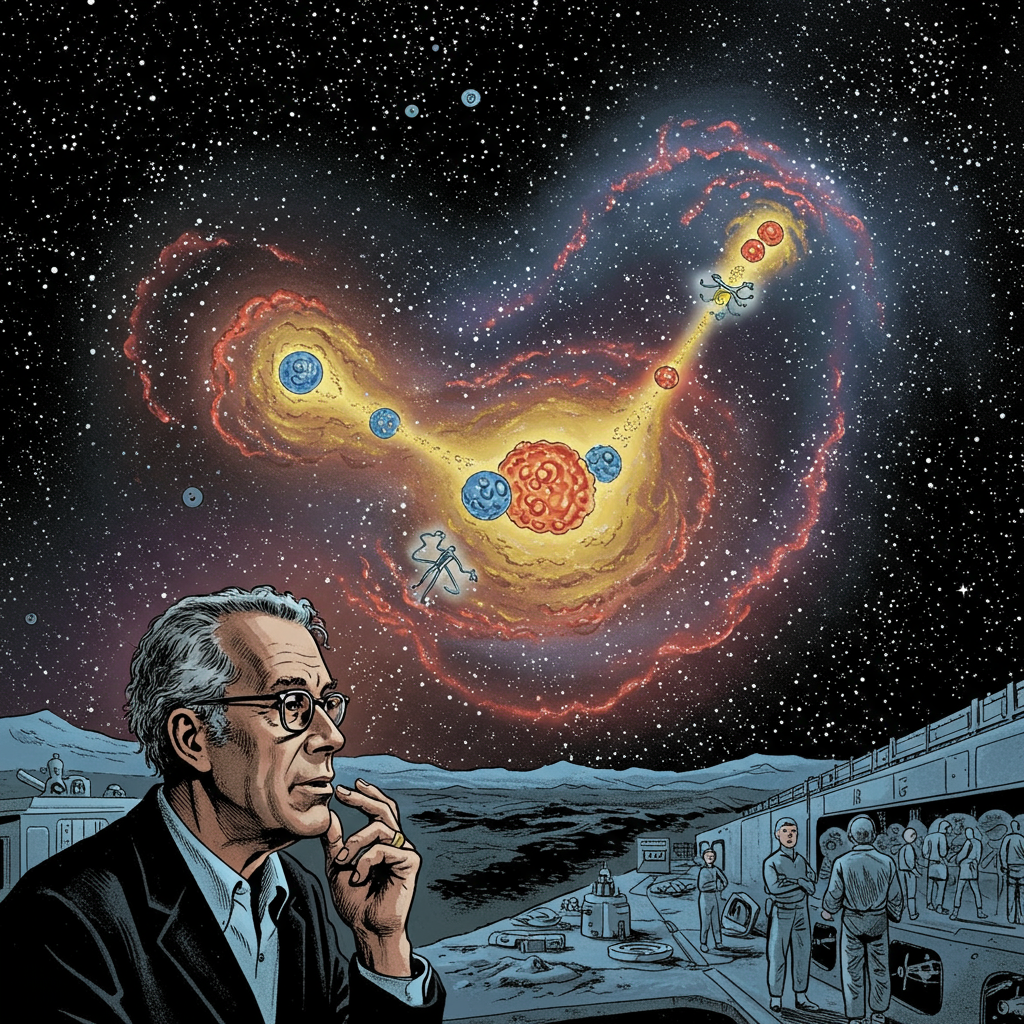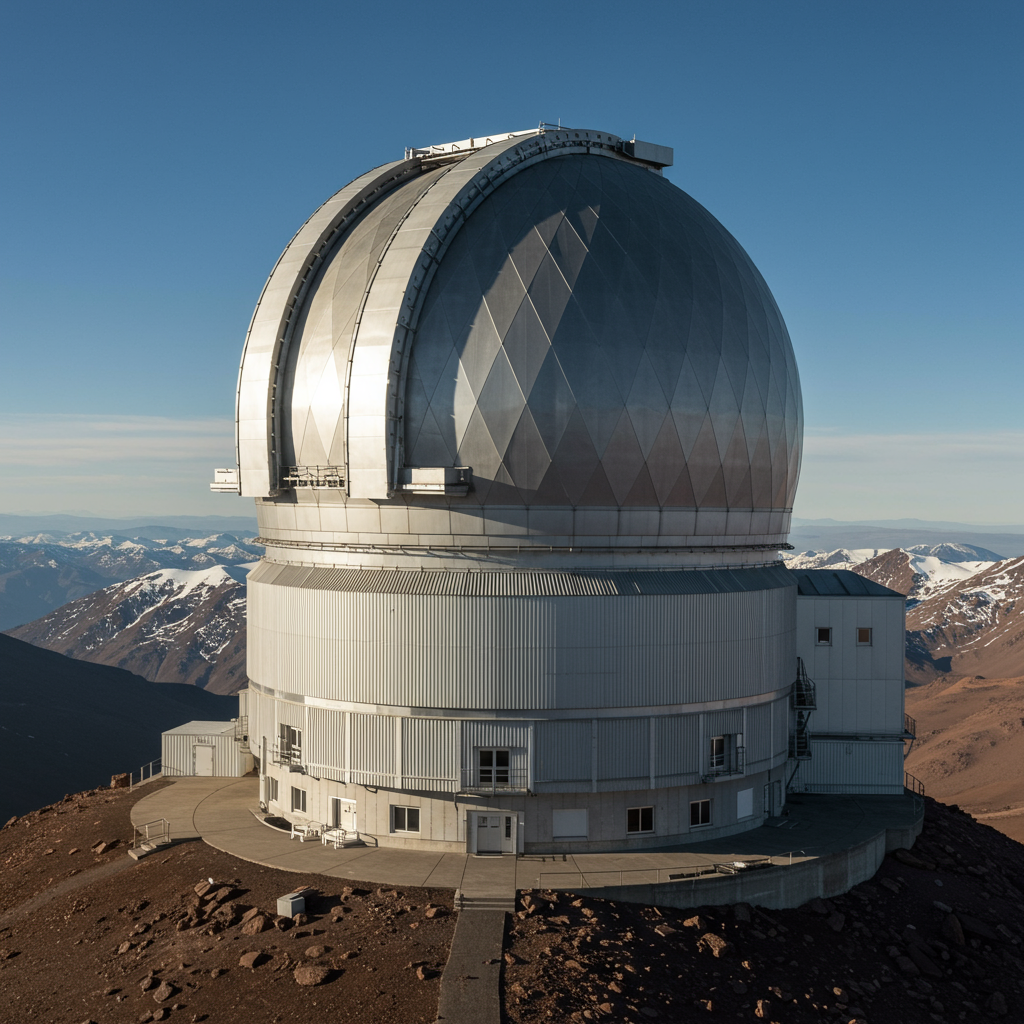What is the single most important scientific fact you could pass down? According to Nobel Prize-winning physicist Richard Feynman, it’s that everything is made of atoms. Understanding these fundamental building blocks is key to grasping the universe around us. But where do atoms come from? The answer is an epic tale spanning billions of years and involving the most extreme events in the cosmos.
Answering this question completely requires delving into various branches of physics – from the Big Bang to nuclear reactions inside stars. While physicists continue to refine the details, we have a strong understanding of how the atoms that make up you, me, and everything else came to be.
The Anatomy of an Atom
First, let’s define what an atom is. At its core is a dense, heavy nucleus, housing positively charged particles called protons and neutral particles called neutrons. Orbiting this nucleus are much lighter, negatively charged electrons. A neutral atom maintains a balance: it has an equal number of protons and electrons.
The identity of an atom – what we call an element – is determined by the number of protons in its nucleus. For instance, an atom with one proton is always hydrogen, while an atom with two protons is always helium. While protons and neutrons are composite particles made of even smaller fundamental particles called quarks, and electrons belong to a group of fundamental particles called leptons, it’s the arrangement of protons, neutrons, and electrons that forms the atom itself. The incredibly strong force binds the protons and neutrons tightly together within the nucleus.
Most of the ordinary matter scattered across the universe is made up of the two simplest elements: hydrogen (one proton) and helium (two protons). These constitute about 90% and 8% of normal matter, respectively. While carbon, oxygen, iron, and countless other elements are common on Earth, their story begins much later than hydrogen and helium.
The Universe’s First Atoms: A Post-Big Bang Tale
Scientists believe the universe began about 14 billion years ago with the Big Bang, an event that created and rapidly expanded space and everything within it from an incredibly dense, hot state.
In the minutes following the Big Bang, the universe was unimaginably hot – over a billion degrees Fahrenheit (556 million C). At these extreme temperatures, protons and neutrons could collide with enough energy to overcome their mutual electrical repulsion and stick together via the strong force, forming the nuclei of the simplest elements: hydrogen (just a proton) and helium (two protons and two neutrons, with some heavier hydrogen isotopes like deuterium also forming).
However, even though nuclei existed, complete atoms didn’t form immediately. The universe remained too hot for electrons to be captured into stable orbits around these nuclei; they had too much energy and zipped around freely in a dense plasma. This plasma state also meant light (photons) couldn’t travel far; it was constantly scattered by the free electrons, essentially trapping the universe in a kind of cosmic fog.
A crucial turning point arrived approximately 400,000 years after the Big Bang. By this time, the universe had expanded and cooled significantly, reaching a temperature of around 5,000 degrees Fahrenheit (2,760 C). This cooler environment allowed the energetic electrons to finally settle into stable orbits around the hydrogen and helium nuclei. The first neutral atoms were born. This event is often called “recombination,” though “combination” would be a more accurate term, as it was the first time electrons combined with nuclei to form neutral atoms.
With the free electrons now bound within atoms, the universe became transparent for the first time. The light that had been trapped could finally travel freely across the cosmos. This ancient light, stretched to microwave wavelengths by the universe’s continued expansion, is what we observe today as the Cosmic Microwave Background (CMB) – a faint glow permeating the universe, offering a snapshot of this pivotal moment. The period after this release of light but before the formation of the first stars is sometimes referred to as the cosmic dark ages.
Forging Heavier Elements: The Stellar Furnaces
While hydrogen and helium dominate the cosmic landscape, they can’t account for the diversity of elements found on Earth – the carbon in your body, the oxygen you breathe, the iron in your blood, the gold in jewelry. These heavier atoms weren’t created in the Big Bang; they were forged in the fiery hearts of stars.
Creating nuclei with multiple protons and neutrons requires overcoming the strong electrical repulsion between the positively charged protons and forcing them close enough for the strong force to bind them. This demands incredibly high temperatures and pressures – precisely the conditions found inside stars. The process is called nuclear fusion.
In stars like our Sun, hydrogen atoms fuse to form helium. In more massive stars, which achieve even higher core temperatures (exceeding a billion degrees F), this process continues. Helium fuses into carbon, carbon fuses into oxygen, and so on, building up elements through a series of fusion reactions until the core is primarily iron. Elements from carbon up to iron are believed to be predominantly formed through fusion within these massive stellar furnaces during their lifetimes.
The Cosmic Foundry of Supernovae and Neutron Stars
Fusion in a star’s core can’t proceed beyond iron. Fusing elements lighter than iron releases energy, powering the star. But fusing iron or heavier elements actually requires energy, making it an inefficient process within a stable star. So, where do elements heavier than iron – like copper, silver, gold, lead, uranium, and all the others found on the bottom half of the periodic table – come from?
These heavyweights are created during the universe’s most dramatic events: supernovae. A supernova occurs when the core of a massive star runs out of fuel and collapses, triggering a catastrophic explosion. The intense energy and flood of neutrons released during this explosion provide the necessary conditions for rapid neutron capture, building up nuclei much heavier than iron. These newly formed heavy elements are then blasted out into space, enriching the interstellar medium.
Other spectacular cosmic collisions, such as when two ultra-dense neutron stars spiral into each other, can also generate enormous amounts of energy and neutrons, producing significant quantities of the heaviest elements, including vast amounts of gold and platinum, before potentially forming black holes.
The Quantum Reason Matter Feels Solid
Given that atoms consist mostly of empty space – the nucleus is tiny compared to the atom, and electrons are even smaller point-like particles or spread-out waves – you might wonder why solid objects don’t just pass through each other. Why does matter have substance?
This seemingly paradoxical solidity is a profound consequence of quantum mechanics, specifically a rule called the Pauli Exclusion Principle. This principle states that no two identical fermions (a class of particles that includes electrons, protons, and neutrons) can occupy the exact same quantum state simultaneously within a system.
When you try to push two solid objects together, the electrons (which are fermions) in the atoms of one object encounter the electrons in the atoms of the other. For the objects to interpenetrate, the electrons would need to occupy the same quantum states. The Pauli Exclusion Principle forbids this. To get closer, the electrons are forced into higher-energy quantum states. This requires immense energy, creating a powerful resistance known as degeneracy pressure (specifically, electron degeneracy pressure), which prevents the atoms from occupying the same space. It’s this fundamental quantum barrier that makes matter feel solid; it’s far easier to break the chemical bonds between atoms (causing an object to break or tear) than to force the atoms themselves to overlap. This principle also explains why atoms occupy volume at all, forcing electrons into successively higher energy levels and orbitals further from the nucleus.
Still Exploring the Cosmos’s Building Blocks
Understanding how atoms form is a cornerstone of modern physics and astronomy. From the ephemeral plasma of the early universe to the fiery cores of stars and the cataclysmic power of supernovae, the atoms that make up everything around you, including your own body, have journeyed through the cosmos, recycled and reassembled over billions of years. You are, quite literally, made of stardust.
However, our understanding of the universe’s composition is still evolving. Scientists are actively researching mysterious components like dark matter, which makes up a significant portion of the universe but doesn’t appear to be made of ordinary atoms. Furthermore, some philosophical discussions even explore the fundamental nature of these building blocks themselves, questioning whether consciousness could exist in some rudimentary form even at the atomic level, hinting at the depths of the mysteries still hidden within the cosmos.




